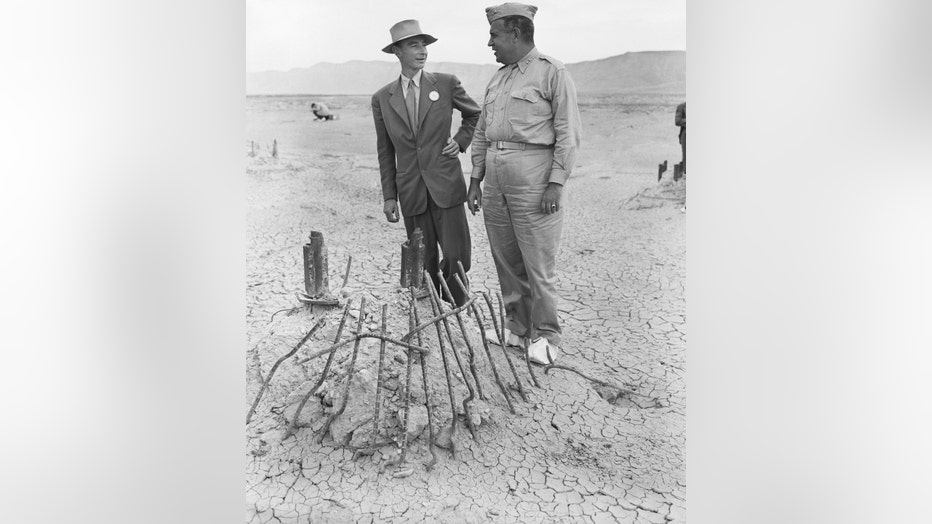San Tan Valley woman recounts time when she lived near Robert Oppenheimer

Lynne Loss on 'Oppenheimer' - full interview
The movie Oppenheimer has led to a certain level of interest in the theoretical physicist's life and work, and recently, FOX 10's Stephanie Bennett sat down with Lynne Loss, who, while she was growing up, was Oppenheimer's neighbor in New Mexico.
SAN TAN VALLEY, Ariz. - It appears the epic biographical thriller Oppenheimer, which earned more than $80 million at the box office during its opening weekend, has a local connection.
We recently spoke with a woman in San Tan Valley who said Robert Oppenheimer was her neighbor when she was growing up.
Lynne Loss, 80, said her family lived and worked in New Mexico, where the atomic bomb was being tested and made.
"Some of the kids my age that grew up there, a lot of them didn’t even know what their parents did," said Loss. "I was nine years old, and he was walking in front of the post office, and my mom and dad and my brother were in the car and my mother said ‘I saw Dr. Oppenheimer,' and I looked and saw him walking."

Maj. Gen. Leslie R. Groves (right), Chief of Manhattan Engineering District in which first Atomic Bomb was developed, and Dr. J. R. Oppenheimer, Director of Los Alamos Atomic Bomb Project and Physicist at California Technological Institute, view the
During World War II, Oppenheimer, who was a theoretical physicist, worked as the director of the Manhattan Project’s Los Alamos Laboratory. He’s often referred to as ‘the father of the atomic bomb.' Loss said both her parents, Henry and Elizabeth Davis, worked there, and had a high security clearance. Her father was a field engineer working directly with radiation.
"He would go out to a site, they’d start to do their job, and they would radio and tell them to get out, it was hot," Loss said. "And so then, they would take him up to the lab up there and scrub him down, and dad said his skin almost bled, and they would take the Geiger Counter around to see how much they had ingested, and my dad brought it home on his clothes."

AZ woman recounts life as Oppenheimer's neighbor
The movie Oppenheimer has led to a certain level of interest in the theoretical physicist's life and work, and recently, FOX 10's Stephanie Bennett sat down with a woman who, while she was growing up, was Oppenheimer's neighbor in New Mexico.
Loss said her time there was not a happy one.
"All of those people up there, they were all exposed," said Loss. "The kids were all exposed, but everybody during World War II had to do their jobs. They had to do something, and everybody was working for the war effort."
Being exposed to the radiation had imminent health impacts. Loss said both her parents suffered health complications, while Loss and her brother developed cancer.
Loss also said most of her classmates died before the age of 60. She also said the popular new movie would hit too close to home.
"I don’t want to go see it," said Loss. "It would probably upset me, you know. I can hardly go to Los Alamos. It upsets me. It was such high security that how would anybody know what really went on? They wouldn’t know as the average person."
Atomic Heritage Foundation
https://ahf.nuclearmuseum.org/

